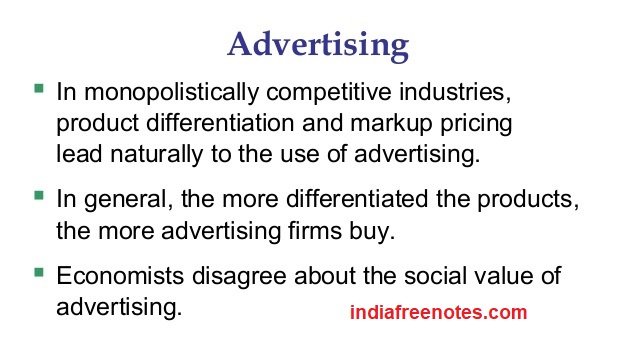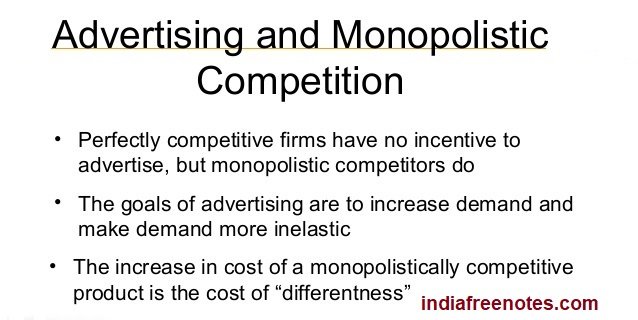Advertising is information provided by a company about its product or operation, usually through media such as television, radio, newspapers, magazines, and the Internet, to promote or maintain sales, revenue, and/or profit.
Advertising is frequently used by monopolistic competition to accomplish two related goals product differentiation and market control. To the extent that a firm can inform buyers about physical differences or create the perception of such differences, then product differentiation increases.
Moreover, with product differentiation comes market control. If advertising convinces buyers that a good is different (and better) than comparable products, then a firm can charge a higher price.
The exhibit to the right can be used to illustrate how advertising can affect the demand facing a monopolistically competitive firm. This particular situation is that facing Manny Mustard’s House of Sandwich for the production of his famous Deluxe Club Sandwich. Manny suspects that he can enhance his sales and profitability through advertising.
Perfect competition arises from the equilibrium state of supply and demand. A firm in perfect competition is selling the same undifferentiated product as other firms, and their demand is directly based on market equilibrium factors. Because of this, there is no need for marketing, because the business will exist and the demand will continue as long as the market dictates it.
For monopolistic competition, everyone is trying to gain market share, and all firms have differentiated products. Because of this, firms have to advertise their particular strengths to drive more traffic to their business. For instance, a fast food restaurant will advertise their expansive breakfast menu to capitalize on those customers who desire breakfast food quick, as opposed to another firm exclusively advertising their low prices. A firm in monopolistic competition will have to sell its benefits in order to increase demand for its product.

